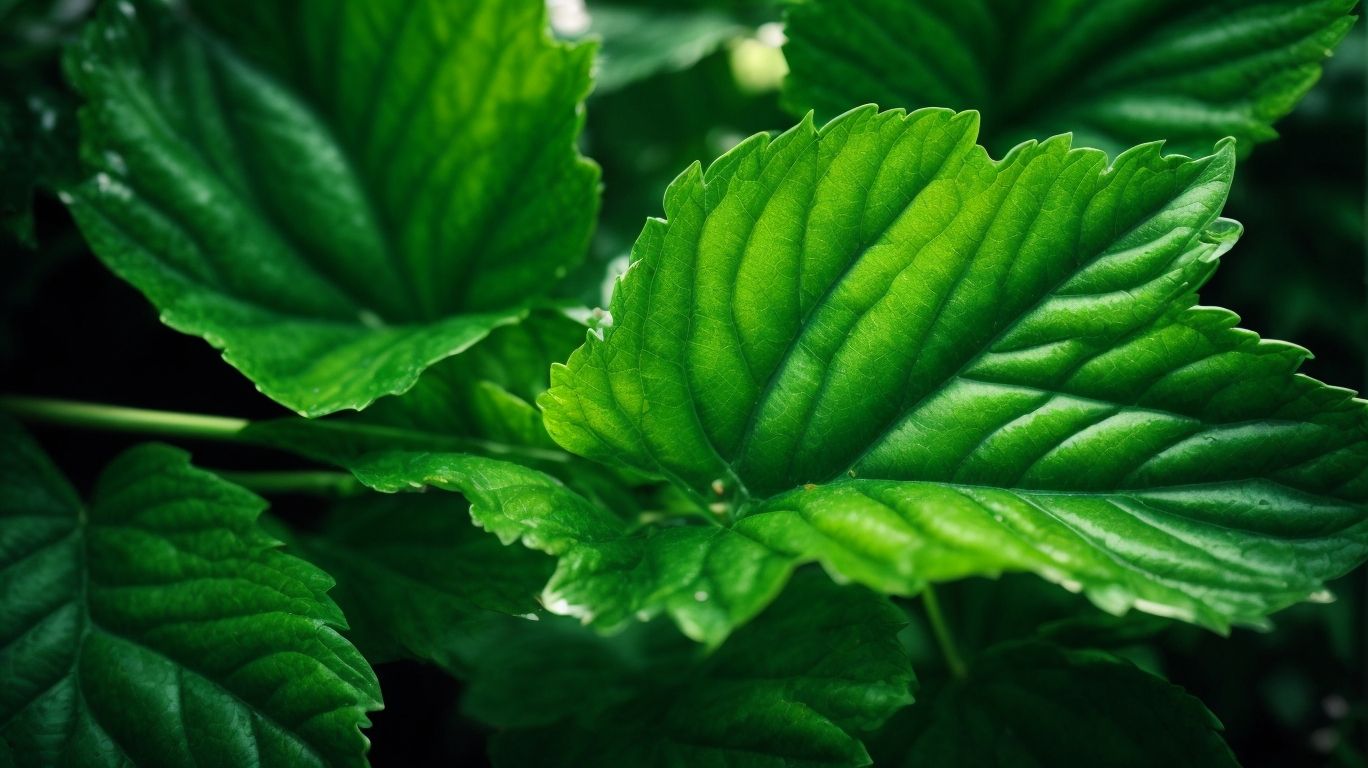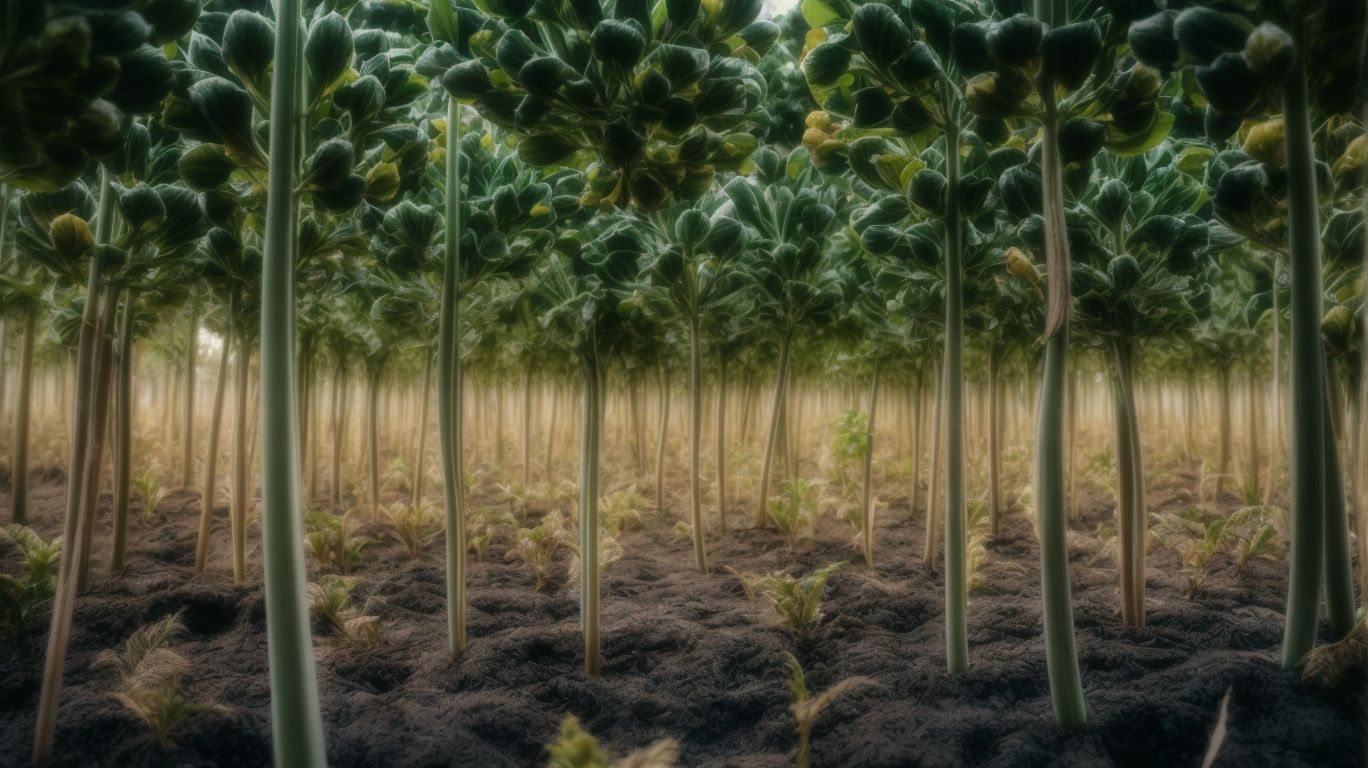Ethylene biosynthesis is a natural process that occurs in plants, producing a gas that plays an important role in plant growth and development. This gas, known as ethylene, is a simple compound consisting of two carbons and four hydrogens. Despite its simplicity, ethylene is a powerful hormone that regulates various physiological processes in plants. Understanding the mechanism of ethylene biosynthesis is crucial for farmers and researchers in improving crop production and quality.
According to a study published in the journal Plant Cell, Tissue and Organ Culture by Dr. M. Atanasova and Dr. M. G. Georgiev, ethylene is an essential hormone for plants because it influences various aspects of plant growth, including seed germination, root growth, flowering, and fruit ripening. Ethylene is also involved in the plant’s response to stress, such as environmental factors and pathogen attacks.
Ethylene is produced in plants through a complex process called biosynthesis. This process involves several enzymes, hormones, and other chemicals, and is regulated by various environmental and physiological factors. Some of the key steps in ethylene biosynthesis include the conversion of amino acid methionine to ethylene by the enzyme ACC synthase and the conversion of ACC to ethylene by the enzyme ACC oxidase.
Several factors can affect the production of ethylene in plants, such as temperature, light, and availability of nutrients. Hormones, such as auxins, cytokinins, and abscisic acid, can also regulate ethylene production by either inhibiting or stimulating enzymes involved in ethylene biosynthesis.
The effects of ethylene on plant growth and development are diverse and depend on the plant species and stage of growth. In general, ethylene promotes seed germination and root growth. However, high levels of ethylene can inhibit root growth and cause plant wilting and senescence. Ethylene also plays a crucial role in flowering and fruit ripening, triggering the production of enzymes that break down cell walls and soften fruits for ripening.
Farmers and researchers have found ways to manipulate ethylene biosynthesis for agricultural purposes. This includes using synthetic chemicals to inhibit or enhance ethylene production, as well as bioengineering plants to produce more or less ethylene. However, the potential benefits and risks of these practices are still being studied, as they can result in altered plant growth, fruit quality, and susceptibility to stress and diseases.
Key Takeaways:
What Is Ethylene Biosynthesis in Plants?

Photo Credits: Chemicalglossary.Net by Joseph Clark
Ethylene biosynthesis in plants is the natural process by which plants produce ethylene, a gaseous plant hormone. This crucial hormone plays a vital role in various physiological processes, including fruit ripening, leaf senescence, and flower development.
The production of ethylene in plants involves a complex pathway that utilizes enzymes and precursor molecules. It begins with the conversion of the amino acid methionine to S-adenosyl-L-methionine (SAM), which is then transformed into 1-aminocyclopropane-1-carboxylic acid (ACC) by the enzyme ACC synthase. Finally, ACC is converted to ethylene by the enzyme ACC oxidase.
A thorough understanding of this process is essential for manipulating plant growth and development in agriculture and horticulture.
Why Is Ethylene Important for Plants?

Photo Credits: Chemicalglossary.Net by Albert Anderson
Ethylene plays a crucial role in the growth and development of plants by acting as a hormone that regulates various physiological processes. It is responsible for promoting fruit ripening, resulting in color changes and softening. Additionally, it helps regulate leaf and flower senescence, ensuring that resources are redirected for future growth. Ethylene also plays a role in seed germination and root initiation, as well as inducing defense responses against pathogens and environmental stresses.
Understanding the significance of ethylene allows farmers to manipulate plant growth for desired outcomes, such as extending the shelf life of fruits and vegetables by controlling ethylene levels.
What Are the Functions of Ethylene in Plants?
Ethylene plays a vital role in various aspects of plant growth and development.
- Promotes fruit ripening: Ethylene triggers the ripening process in fruits, leading to changes in color, softening, and an increase in sugar content.
- Regulates senescence: Ethylene controls the aging and wilting process in plants, particularly in leaves and flowers.
- Enhances seed germination: Ethylene stimulates the germination of seeds by breaking dormancy and promoting root growth.
- Controls abscission: Ethylene is responsible for the shedding of leaves, flowers, and fruits in plants.
- Mediates stress responses: As a signaling molecule, ethylene plays a crucial role in responding to various stresses, including drought, flooding, and pathogen attack.
Having an understanding of the functions of ethylene can greatly benefit agricultural practices and contribute to improving crop yield.
How Is Ethylene Produced in Plants?

Photo Credits: Chemicalglossary.Net by Elijah Lee
Ethylene, a vital plant hormone, is generated through a complex biosynthetic pathway. This process involves several key steps:
- Conversion of Methionine: Methionine, an amino acid, is transformed into S-adenosylmethionine (SAM) by the enzyme SAM synthetase.
- Formation of ACC: SAM is then converted to 1-aminocyclopropane-1-carboxylic acid (ACC) by ACC synthase.
- Conversion to Ethylene: ACC is further converted to ethylene by ACC oxidase. This step includes the removal of two carbons and the release of carbon dioxide and water.
These steps occur in different plant tissues and can be influenced by factors such as environmental conditions and plant growth regulators. Understanding this process is essential for agricultural practices and the manipulation of ethylene levels in plants.
What Are the Steps of Ethylene Biosynthesis?
Ethylene biosynthesis in plants involves a series of steps that ultimately lead to the production of ethylene, a critical hormone.
- The first step is the conversion of methionine to S-adenosyl-L-methionine (SAM) by the enzyme SAM synthase.
- Next, SAM is converted to 1-aminocyclopropane-1-carboxylic acid (ACC) by the enzyme ACC synthase.
- Finally, ACC is converted to ethylene by the enzyme ACC oxidase.
These steps are tightly regulated by various factors, such as environmental conditions and hormonal signals. Understanding the steps of ethylene biosynthesis is essential for manipulating its production in plants for agricultural purposes. By inhibiting or enhancing specific enzymes involved in the biosynthesis pathway, farmers can control ethylene levels to regulate plant growth, development, and responses to stress.
What Are the Factors That Affect Ethylene Production in Plants?

Photo Credits: Chemicalglossary.Net by Ethan Wright
There are various factors that can influence the production of ethylene in plants, including:
- Environmental cues, such as light, temperature, and stress conditions, can either stimulate or hinder ethylene production.
- Hormonal regulation involves maintaining a balance between ethylene and other plant hormones, such as auxins and cytokinins.
- Genetic factors, such as the expression of specific genes and the presence of certain enzymes, can also have an impact on ethylene production.
Understanding these factors is crucial for optimizing plant growth and development.
Did you know that certain fruits, like bananas and apples, emit ethylene gas as they ripen, which can speed up the ripening process of other fruits stored nearby?
What Environmental Conditions Can Affect Ethylene Biosynthesis?
Environmental conditions play a crucial role in the biosynthesis of ethylene in plants. Factors such as temperature, light, humidity, and air pollutants can have a significant impact on the production of this compound.
High temperatures and exposure to stressors like drought or flooding can increase the production of ethylene, while cooler temperatures can inhibit it. The intensity and quality of light also play a role in ethylene biosynthesis, with certain wavelengths promoting or inhibiting its production. Moreover, high humidity levels can enhance ethylene production, while air pollutants like ozone can stimulate its synthesis.
Understanding these environmental conditions is crucial for effectively managing ethylene levels in plants and optimizing their growth and development.
How Do Hormones and Other Chemicals Regulate Ethylene Production?
Hormones and other chemicals play a crucial role in regulating ethylene production in plants. Here is a list of steps that explain how they regulate ethylene production:
- Stimulate Biosynthesis: Certain hormones, such as auxins and cytokinins, can stimulate the production of ethylene in plants.
- Inhibit Biosynthesis: On the other hand, other hormones like abscisic acid and gibberellins can hinder the production of ethylene.
- Feedback Regulation: Ethylene itself can regulate its own production by engaging in feedback loops, either promoting or inhibiting its synthesis based on the needs of the plant.
- Environmental Signals: Hormones and other chemicals can respond to environmental signals, such as light, temperature, and stress, to adjust ethylene production accordingly.
- Interplay with Other Hormones: Hormones work together to fine-tune ethylene production, creating a complex network of regulation.
Understanding how hormones and other chemicals regulate ethylene production is crucial for manipulating this process in agriculture.
What Are the Effects of Ethylene on Plant Growth and Development?

Photo Credits: Chemicalglossary.Net by Zachary Hall
Ethylene is a crucial plant hormone that plays a significant role in various aspects of plant growth and development.
- Stem growth: Ethylene promotes stem elongation, aiding plants in reaching for sunlight and strengthening them to withstand wind or other environmental stresses.
- Fruit ripening: Ethylene triggers fruit ripening, causing changes in color, texture, and flavor.
- Leaf senescence: Ethylene accelerates leaf senescence, leading to leaf yellowing and shedding.
- Flower and bud development: Ethylene influences flower opening, bud dormancy, and the formation of abscission layers.
Pro-tip: To control the effects of ethylene on plant growth, it’s crucial to monitor its levels and provide adequate ventilation to prevent ethylene buildup within enclosed spaces.
How Does Ethylene Affect Seed Germination and Root Growth?
Ethylene plays a crucial role in seed germination and root growth in plants. Here are the steps that explain how ethylene affects these processes:
- Seed germination: Ethylene stimulates the seed to break dormancy and initiate germination. It promotes the production of enzymes that break down stored nutrients, enabling the embryo to grow and develop.
- Root growth: Ethylene inhibits root elongation and promotes root hair formation. This helps plants absorb nutrients and water from the soil effectively.
True history: In the early 20th century, scientists discovered that ethylene gas could accelerate seed germination and promote root growth. This discovery led to the development of ethylene-based products that enhance plant growth, such as ethylene-releasing compounds and ethylene inhibitors. Today, our understanding of the effects of ethylene on seed germination and root growth continues to revolutionize agricultural practices and improve crop productivity.
What Are the Roles of Ethylene in Flowering and Fruit Ripening?
Ethylene plays vital roles in the processes of flowering and fruit ripening in plants. It serves as a signaling molecule, initiating the start of flowering and coordinating the timing of this process. Furthermore, ethylene aids in fruit ripening by stimulating the production of enzymes that break down cell walls, resulting in softening and color changes in the fruit. Additionally, ethylene influences the production of volatile compounds that contribute to the aroma and flavor of fruits. Having a thorough understanding of ethylene’s roles in flowering and fruit ripening can assist in optimizing agricultural practices and increasing crop yield.
How Can Ethylene Biosynthesis Be Manipulated for Agricultural Purposes?

Photo Credits: Chemicalglossary.Net by Eugene Williams
To enhance ethylene biosynthesis for agricultural purposes, there are several methods that can be implemented:
- Genetic engineering: Modifying the genes responsible for ethylene production can regulate its levels in plants.
- Chemical treatments: Using inhibitors or promoters can control ethylene synthesis and its effects on plant growth and development.
- Crop management practices: Adjusting environmental conditions such as temperature, humidity, and light can influence ethylene production.
- Hormone treatments: Applying synthetic ethylene or other plant hormones can regulate plant growth, flowering, and fruit ripening.
In the 20th century, scientists discovered the potential of manipulating ethylene production to improve crop yield and quality. This led to the development of techniques such as genetic engineering and chemical treatments, revolutionizing modern agriculture. Farmers now have the ability to fine-tune ethylene biosynthesis for optimal plant growth, disease resistance, and fruit maturation, resulting in a more sustainable and efficient food production system.
What Are the Methods Used to Inhibit or Enhance Ethylene Production in Plants?
There are several methods that can be used to inhibit or enhance ethylene production in plants:
- Ethylene inhibitors: Chemical compounds such as 1-MCP (1-methylcyclopropene) can be utilized to inhibit ethylene action and delay the ripening process in fruits and vegetables.
- Ethylene synthesis inhibitors: Compounds like aminoethoxyvinylglycine (AVG) or aminoethoxyvinylglycine hydrochloride (AVG-HCl) can block the production of ethylene in plants.
- Ethylene-releasing compounds: Conversely, ethephon is a compound that releases ethylene and can enhance its production in plants. It is commonly used to promote fruit ripening and flower senescence.
- Genetic manipulation: Through genetic engineering, it is possible to modify the genes responsible for ethylene production in plants, either to enhance or inhibit its synthesis.
Pro-tip: Timing is crucial when using ethylene inhibitors. Make sure to apply them at the appropriate stage of plant development to achieve the desired effect.
What Are the Potential Benefits and Risks of Manipulating Ethylene Biosynthesis in Agriculture?
Manipulating ethylene biosynthesis in agriculture has the potential to bring both benefits and risks. These potential benefits include enhanced crop yield, improved fruit quality, and extended shelf life. By inhibiting ethylene production, the ripening process can be delayed, reducing post-harvest losses. Conversely, increasing ethylene production can promote flowering and fruit ripening, leading to earlier and more uniform harvests.
However, there are also risks associated with manipulating ethylene biosynthesis. Excessive exposure to ethylene can result in premature senescence, tissue damage, and decreased overall crop quality. Therefore, careful regulation of ethylene levels is crucial to avoid negative impacts on plant growth and development. It is also important to consider any unintended effects on the environment and ecosystem before implementing ethylene manipulation strategies in agriculture.
Frequently Asked Questions
What is ethylene biosynthesis?
Ethylene biosynthesis is the process by which plants produce ethylene, a simple unsaturated hydrocarbon that plays a crucial role in plant growth and development.
How is ethylene biosynthesis regulated at the molecular level?
Ethylene biosynthesis is tightly regulated at both the transcriptional and post-translational levels, allowing plants to control the amount of ethylene produced and its effects on processes such as climacteric flower senescence and fruit ripening.
What is the ethylene gas signal transduction pathway?
The ethylene gas signal transduction pathway is responsible for transmitting the ethylene signal within the plant. It is regulated by factors such as transcription factors and protein kinases.
What is the horticultural significance of understanding ethylene biosynthesis and response in plants?
Understanding ethylene biosynthesis and response in plants has important implications for horticulture and agriculture, as it could lead to new methods for controlling plant growth and development.
What is the role of small molecules in regulating the ethylene response in plants?
Small molecules with a thiourea skeleton have been found to induce the ethylene response in plants, providing potential for their use in regulating ethylene-dependent processes.
How has positional cloning contributed to our understanding of ethylene biosynthesis and response in plants?
Positional cloning has identified the HvTUBULIN8 gene as a candidate for the round lateral spikelet trait in barley, which is regulated by ethylene. This highlights the importance of understanding these processes in different plant species.
